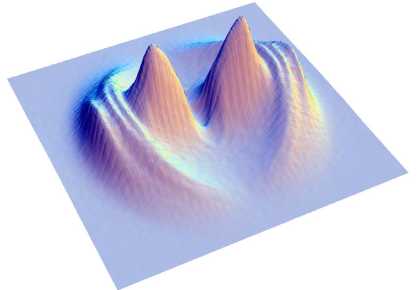| |
 |
Since more than a decade ago, extremely
high light intensities can be realized by lasers producing
pulses with energies of several milijoules and durations
smaller than 100 femtoseconds. When atoms and molecules are
exposed to the focused light of such sources, they feel
intensities of up to 1015 W/cm2. The
light can no longer be considered as a small perturbation, but
has to be treated equally as the molecule, since the both
terms in Hamiltonian are of the same magnitude now. This
molecule-photon system exhibits so far unknown effects, which became known as
molecular bond-softening, level-shifting and trapping of the
molecules in new formed potentials, which leads to a
stabilization of the molecule in the light fields. |
|
| |
In our experiment small molecules like hydrogen molecular ion
H2+
and its isotopic variants D2+ and HD+ are
formed in an ion beam and exposed to intense laser pulses. The fragments
produced in
photodissociation and
Coulomb explosion of
these molecules are projected on a 2-dimensional detector, where their velocity distribution is imaged. Due to the high
velocity resolution, the fate of
single vibrational levels could be investigated for the first time. In the
Coulomb explosion spectra, we have recently discovered a peak structure, which is related to ionization at so-called "critical" internuclear
distances. The isotopic variant HD+ with its different symmetry
is of special interest: during photodissociation the electron can
join the proton or the deuteron. Theoretical calculations predict that it
favours the deuteron, what would be a severe symmetry breakdown of the
Born-Oppenheimer approximation. Our experiment allows to test this
prediction. The evaluation
of the results is underway. |
|